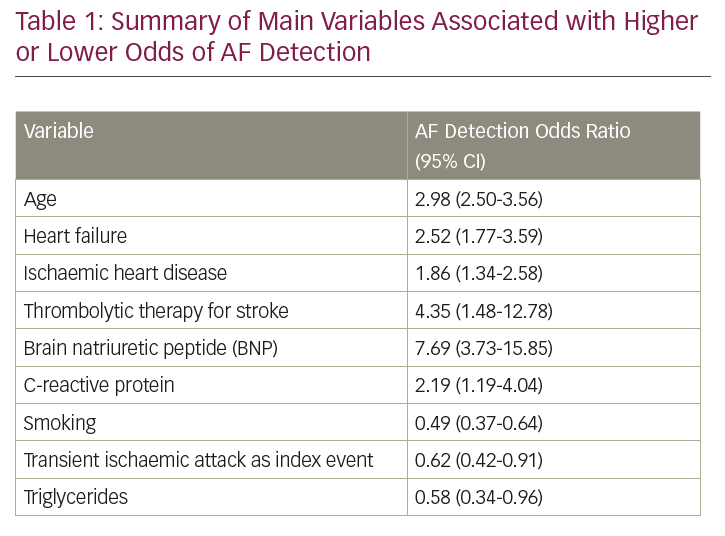Introduction: Extended cardiac monitoring increases atrial fibrillation (AF) detection after stroke but is unlikely to be available for all patients due to cost and may not be necessary for all patients. Identifying patients at higher or lower risk of AF detection after stroke may allow the duration of cardiac monitoring to be decided on a more personalised basis. We performed a systematic review and meta-analysis to identify variables associated with AF detection on cardiac monitoring after acute ischaemic stroke or transient ischaemic attack (TIA).
Methods: We followed the Cochrane Collaboration Guidelines and retrieved 12,722 studies from MEDLINE, EMBASE, Cochrane and Web of Science. After screening, 28 studies were selected and data on 54 variables were extracted. We assessed clinical variables and blood biomarkers at the time of index stroke/TIA and the outcome was AF >30 seconds detection in the first year after stroke/TIA. Comprehensive Meta-analysis software was used to generate an odds ratios and forest plot for each variable. Studies were assessed for quality using the Quality in Prognostic Studies (QUIPS) tool.
Results: The 28 studies included 9,871 patients and AF was detected in 1,104 patients (11%). Of the 54 variables assessed, 36 were not associated with AF detection, 14 were associated with higher odds of AF and 4 were associated with lower odds of AF. A summary of the main variables associated with higher or lower odds of AF detection is included in Table 1. Risk of bias was identified as low in 15 studies, medium in 10 studies and high in 3 studies.
Conclusion: We have identified clinical variables and blood markers that can stratify the probability of AF detection on cardiac monitoring after stroke. Our results may help to guide the duration of cardiac monitoring to detect AF after stroke on a more personalised basis. ECG parameters may also be associated with AF detection and should be evaluated in future studies.








